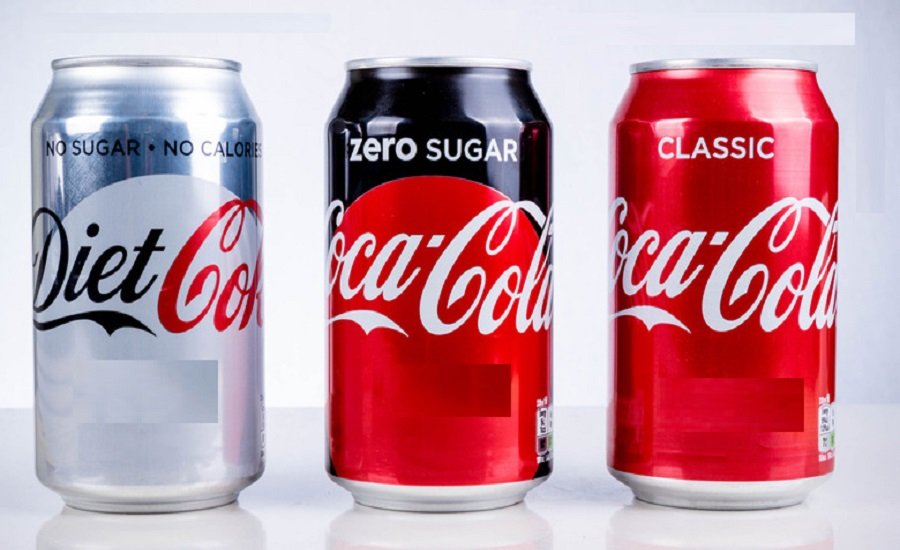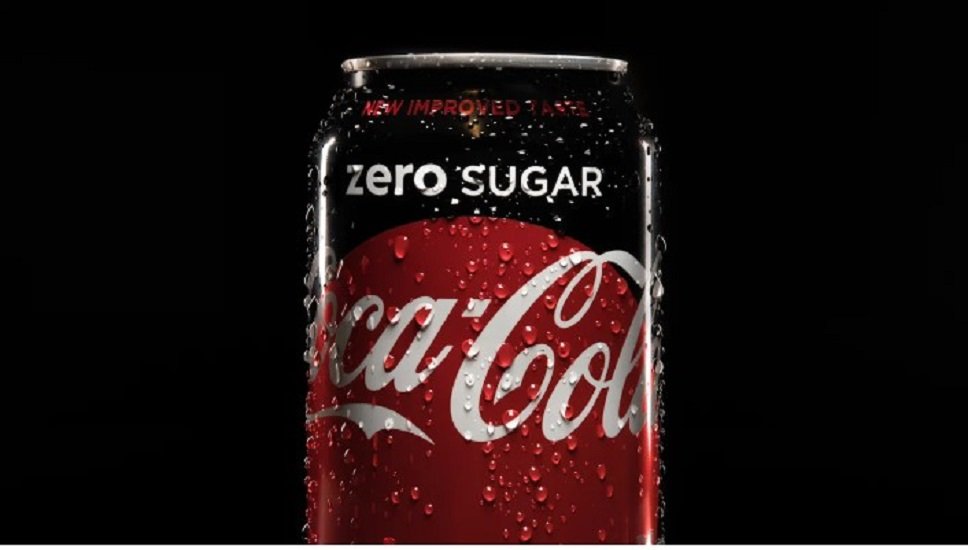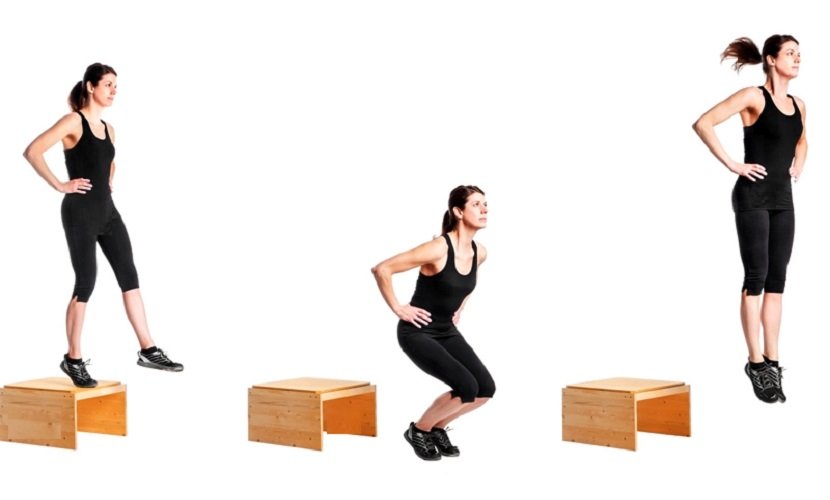Health And Fitness
Coca-Cola Zero Sugar vs Diet Coke: Which One to Choose In 2025?

2025: Coca-Cola Zero Sugar vs Diet Coke: Which One to Choose?
The Battle of Sugar-Free Colas in 2025
The competition between Diet Coke and Coca-Cola Zero Sugar is heating up again in 2025, as these two iconic sugar-free colas continue to battle for the top spot in the market. For decades, both have offered unique experiences to fans who want the taste of cola without the sugar. But how did this rivalry come to be?
It all started in 1983 with the launch of Diet Coke—a revolutionary choice for those looking to cut back on sugar without sacrificing flavor. Diet Coke quickly became a favorite among calorie-conscious consumers, thanks to its crisp and distinctive taste.
Fast forward to 2006, when Coca-Cola introduced a new player: Coca-Cola Zero. This drink was designed to appeal to a different crowd—those who loved the classic Coca-Cola flavor but wanted a sugar-free version. As tastes and preferences shifted, Coca-Cola rebranded this beverage as Coca-Cola Zero Sugar in 2016, aiming to replicate the beloved original Coke flavor even more closely.
Both Diet Coke and Coca-Cola Zero Sugar have evolved alongside consumer trends, and each has developed its own loyal following. Today, as health trends continue to prioritize low-sugar and no-sugar options, the rivalry between these two drinks remains strong. Whether you’re a fan of Diet Coke’s classic taste or prefer the closer-to-original flavor of Coca-Cola Zero Sugar, there’s no doubt that these beverages will keep pushing each other to innovate and delight.
When it comes to choosing between Coca-Cola Zero Sugar and Diet Coke, the decision often boils down to taste and personal preference. Each drink has its own distinct flavor that caters to different taste buds.
**Coca-Cola Zero Sugar** is known for its bold and rich taste that closely resembles the classic Coca-Cola. It’s a favorite among those who love the traditional cola experience but want to skip the sugar. With a deeper flavor profile, it gives you that full-bodied cola punch, making it ideal for anyone who craves the familiar taste of original Coke.
On the flip side, **Diet Coke** has carved out its own niche with a lighter, crisper flavor. It doesn’t aim to mimic the original Coca-Cola taste; instead, it offers a unique blend that stands on its own. This makes it a go-to choice for those who want a refreshing and distinct cola that isn’t too intense.
Beyond taste, it’s important to consider what’s inside these cans, especially if you’re trying to make healthier choices. Both **Coca-Cola Zero Sugar** and **Diet Coke** are sugar-free and have zero calories, making them popular choices for people looking to reduce their calorie intake without compromising on flavor. However, they differ in other nutritional aspects, such as caffeine content, which might influence your choice depending on how much of a caffeine boost you’re looking for.
In the ongoing world of sugar-free colas, understanding these differences is key. Whether you prefer the richer, more traditional taste of Coca-Cola Zero Sugar or the lighter, refreshing taste of Diet Coke, there’s a drink for everyone looking to enjoy cola without the sugar.
Evolution of Sugar-Free Colas
Historical Background
Diet Coke’s launch in 1983 was a game-changer in the soft drink world. It was the first big sugar-free cola to hit the shelves, offering a tasty alternative for people wanting to cut back on sugar and calories. With its unique taste and formula, Diet Coke quickly became a favorite, carving out a spot in the daily routines of those who wanted a lighter soda option without compromising on flavor.
Seeing the success of Diet Coke, Coca-Cola introduced Coca-Cola Zero in 2006. This new addition was aimed at those who loved the idea of a sugar-free drink but craved a flavor that was closer to the classic Coca-Cola. It wasn’t just another diet soda; it was crafted to appeal to those who wanted that original Coke taste without the sugar, offering more choices to fit different preferences.
In 2016, Coca-Cola Zero got a makeover and became Coca-Cola Zero Sugar. This wasn’t just a rebranding—it was a step toward improving the drink to make it taste even more like the original Coca-Cola. With tweaks to its recipe, Coca-Cola Zero Sugar aimed to deliver an authentic cola experience, all while staying true to its sugar-free promise.
These key moments show how both Diet Coke and Coca-Cola Zero Sugar have become staples for people who enjoy soda but want to avoid the extra sugar and calories. They also reflect how Coca-Cola adapts to changing tastes and continues to innovate, making sure there’s something for everyone in the ever-evolving world of sugar-free drinks.
Taste and Flavor Profile
When it comes to choosing a sugar-free cola, taste is often what makes or breaks a favorite. Coca-Cola Zero Sugar and Diet Coke, each with their own unique flavors, offer two distinct experiences for soda lovers.
**Coca-Cola Zero Sugar** is designed to taste as close as possible to the classic Coca-Cola, offering a rich, bold flavor that mirrors the original but without the sugar. It’s perfect for those who love the traditional taste of Coke but want to skip the calories.
On the other hand, **Diet Coke** has its own unique flavor that sets it apart. With a lighter, crisper taste, it’s a refreshing option for those who prefer a soda that doesn’t try to replicate the original Coca-Cola flavor but instead provides a distinct, satisfying alternative.
Whether you lean toward the familiar, robust taste of Coca-Cola Zero Sugar or the light and refreshing profile of Diet Coke, both drinks have carved out their places in the world of sugar-free colas, catering to different taste preferences and lifestyles.

Coca-Cola Zero Sugar
Coca-Cola Zero Sugar is loved for its striking similarity to the taste of classic Coca-Cola. With a carefully developed formula that brings out the familiar flavors of the original, it offers a rich, bold cola experience without the sugar. The deep notes of caramel, vanilla, and a hint of spices give it that iconic taste, making it a great choice for those who want all the classic flavor but none of the sugar.
What makes Coca-Cola Zero Sugar stand out is its ability to deliver that full-bodied, authentic cola flavor. Whether you’re drinking it straight from the can or using it as a mixer, its robust taste holds up, offering a satisfying experience for anyone who loves the traditional essence of Coca-Cola but is looking for a healthier, sugar-free option.
Diet Coke
On the other hand, Diet Coke offers a different kind of cola experience with its own unique flavor blend. It’s crafted to deliver a lighter, more refined taste compared to Coca-Cola Zero Sugar. While it still has that cola essence, Diet Coke brings in subtle differences that make it stand out. The crisp, effervescent bubbles and a slightly tangy kick give it a distinct character, perfect for those who prefer a soda that feels lighter and less intense.
Diet Coke is known for its refreshing qualities and its lighter, clean finish. The combination of mild citrusy notes and hints of spice creates a flavor profile that’s unmistakably Diet Coke—offering a satisfying cola taste without the heaviness or overly sweet flavor. This makes it a great choice for those who want something refreshing and unique compared to traditional colas.
With both Coca-Cola Zero Sugar and Diet Coke available, The Coca-Cola Company ensures there’s something for everyone in the sugar-free cola market. Whether you enjoy the bold, classic taste of Coca-Cola Zero Sugar or the crisp, lighter nuances of Diet Coke, both options provide a satisfying, sugar-free cola experience tailored to different tastes.
Nutritional Comparison
Choosing between Coca-Cola Zero Sugar and Diet Coke isn’t just about taste. It’s also about how each fits into your nutritional needs and health goals. Both are sugar-free and have zero calories, making them popular choices for those looking to cut down on sugar and calories without giving up the cola experience.
However, the small differences in ingredients and nutritional content, like caffeine levels and sodium content, can make one more suitable for you than the other. Knowing these details can help you pick the drink that best matches your dietary preferences, whether you’re looking for a low-calorie option, managing caffeine intake, or simply trying to make a healthier choice.
By considering both the taste and the nutritional profile of these drinks, you can make a more informed decision that aligns with what you’re looking for in a soda.
Caloric Content
Both Coca-Cola Zero Sugar and Diet Coke let you enjoy a refreshing soda without any of the guilt that comes with added sugars or calories. If you’re watching your calorie intake or following a low-calorie diet, these sugar-free options offer a great alternative to regular sugary sodas. By eliminating the sugar and calories, they allow you to have a satisfying cola experience without feeling like you’re compromising on flavor.
The fact that both drinks have zero calories makes them appealing for anyone looking to cut down on their calorie consumption while still enjoying the bubbly, fizzy experience of a carbonated drink. Whether you prefer the bold, classic taste of Coca-Cola Zero Sugar or the lighter, crisp flavor of Diet Coke, both are great choices for quenching your soda cravings without worrying about the extra calories.
Additional Nutrients
When choosing between Coca-Cola Zero Sugar and Diet Coke, it’s not just about the zero sugar and calories. They each have their own little quirks when it comes to nutrition. For example, both drinks have caffeine, but the amount can differ. That boost of caffeine might be just what you need to stay alert or get a bit of extra energy.
But it’s not just caffeine—other factors like sodium levels can vary between the two. These small differences might matter depending on your dietary needs or health goals. By looking at these details, you can pick the drink that best fits your personal preferences and lifestyle.
So, whether you’re focused on avoiding calories or watching your caffeine intake, understanding these nuances helps you make a choice that’s right for you.
Making the Choice: Coca-Cola Zero Sugar or Diet Coke?
FAQ: Coca-Cola Zero Sugar vs. Diet Coke
1. What’s the difference between Coca-Cola Zero Sugar and Diet Coke?
Coca-Cola Zero Sugar and Diet Coke are both sugar-free colas, but they have distinct differences. Coca-Cola Zero Sugar aims to mimic the classic Coca-Cola taste with zero sugar and zero calories, while Diet Coke has a lighter, more unique flavor that differs from the original Coca-Cola.
2. Do Coca-Cola Zero Sugar and Diet Coke contain caffeine?
Yes, both beverages contain caffeine. However, the exact amount of caffeine can vary slightly between the two. Check the label for specific caffeine content if you’re monitoring your intake.
3. Are Coca-Cola Zero Sugar and Diet Coke calorie-free?
Yes, both Coca-Cola Zero Sugar and Diet Coke have zero calories, making them suitable options for those looking to reduce caloric consumption.
4. Which has a stronger cola flavor?
Coca-Cola Zero Sugar is designed to taste more like traditional Coca-Cola, so if you’re looking for a bolder, classic cola flavor, this might be your choice. Diet Coke has a lighter, distinct taste that’s different from the classic cola flavor.
5. Do these beverages contain any sugar?
No, both Coca-Cola Zero Sugar and Diet Coke are completely free of sugar.
6. Are there any differences in sodium content?
Yes, the sodium levels can vary between Coca-Cola Zero Sugar and Diet Coke. If you’re watching your sodium intake, it’s a good idea to check the nutritional information on the label.
7. Can I drink these beverages if I’m on a special diet?
Both Coca-Cola Zero Sugar and Diet Coke are suitable for various diet plans, especially those that require reducing sugar and calorie intake. However, if you have specific dietary restrictions or health concerns, check the ingredient list and consult with a healthcare provider.
8. Which drink is better for someone looking to reduce their sugar intake?
Both beverages are excellent options for reducing sugar intake as they contain no sugar. Your choice may come down to personal taste preference or other nutritional factors.
9. Do these drinks have any artificial ingredients?
Both Coca-Cola Zero Sugar and Diet Coke use artificial sweeteners to replace sugar. Check the ingredient list for specifics if you are concerned about artificial ingredients.
10. How can I decide which one is right for me?
Consider your taste preference and any specific nutritional needs. If you prefer a taste closer to traditional Coca-Cola, go with Coca-Cola Zero Sugar. If you enjoy a lighter, unique flavor, Diet Coke might be your pick. Also, review the nutritional labels to see which one aligns better with your health goals.
Health And Fitness
Walgreens Closing 1,200 Stores: A Major Shift in U.S. Retail Pharmacy

Walgreens has announced plans to close 1,200 stores across the U.S. by 2027 in an effort to optimize its operations. This decision comes after facing profitability challenges, increased competition, and market shifts. CEO Tim Wentworth cited underperforming locations and a difficult consumer environment as primary reasons for the closures. The company aims to focus on its core retail pharmacy business while cutting costs and improving long-term growth potential.
Why Is Walgreens Closing Stores?
Walgreens faces multiple challenges, including shrinking profit margins and decreased foot traffic. In response to inflation and lower consumer spending, the company is streamlining operations by targeting underperforming locations for closure. The ongoing shift to online pharmacies and the rise of competitors like CVS have also put pressure on Walgreens’ brick-and-mortar stores.
Impact on Customers and Communities
Many customers worry about losing access to convenient pharmacy services, especially in smaller communities. However, Walgreens aims to maintain robust service levels by focusing on profitable stores and enhancing its digital offerings. The closures could create opportunities for local pharmacies to fill the gap left by Walgreens in certain areas, though concerns remain about the broader impact on healthcare access.
What’s Next for Walgreens?
Walgreens is not just shutting stores but also revamping its business strategy. The company is reducing its stake in VillageMD and refocusing on pharmacy operations. Walgreens is not just closing stores; the company is also implementing a major shift in its business strategy. This includes reducing its stake in VillageMD and refocusing on its pharmacy operations.
The company will continue to offer retail health services, but with a leaner footprint and improved operational efficiency. As these changes unfold, consumers may see further shifts in how and where they receive pharmacy services. The company’s strategic shift is a response to a changing retail landscape and the need to adapt to changing consumer preferences. Walgreens is making a significant investment in its pharmacy operations to ensure that it can provide the best possible pharmacy care for its customers.
Most Searched Queries Regarding Walgreens Closures:
- “Why is Walgreens closing stores?”
- “List of Walgreens stores closing”
- “Impact of Walgreens closures on healthcare”
- “Alternatives to Walgreens pharmacy services”
Walgreens’ future will depend on how well it adapts to changing consumer preferences and a highly competitive retail landscape.
Financial Struggles & Reduced Profitability
Walgreens has been struggling with reduced profit margins due to inflation, higher shrink (inventory losses from theft and errors), and declining foot traffic. The ongoing changes in the retail pharmacy landscape have prompted Walgreens to reevaluate its operations and shutter underperforming stores. This decision is part of a larger effort to cut costs, streamline its footprint, and optimize the company’s future profitability.
The company is also seeking to improve its ability to compete with other retail pharmacies, such as CVS Health and Rite Aid. Walgreens is also looking to improve its ability to compete with online retailers like Amazon, which have been expanding their healthcare offerings. The decision is also part of a larger effort to cut costs, streamline its footprint, and optimize the company’s future profitability.
Impact on Stock Performance
Walgreens’ financial challenges have caused its shares to drop significantly—over 45% in the last year. In response, the company also lowered its profit forecast for fiscal year 2024 to between $2.80 and $2.95 per share, down from the previous estimate of $3.20 to $3.35 per share.
Customer Service Adjustments
Though the store closures will reduce Walgreens’ physical presence, the company plans to enhance its digital services. It is also reworking its health services, including retail health clinics and pharmacy services, to focus on high-performing regions. Walgreens is reducing its involvement in secondary ventures, like VillageMD, to realign with its core retail pharmacy business.
Workforce Reductions
As part of its cost-cutting strategy, Walgreens recently announced that it will be closing 1,200 stores by 2027. The company also revealed that it will be reducing its workforce, including layoffs across its corporate and retail divisions. While the exact number of job cuts has not been specified, the company has stated that it will be making the necessary changes to ensure its long-term success. This includes layoffs across its corporate and retail divisions, though the company has not specified the exact number of job cuts.
Questions from Consumers
- “How many Walgreens stores are closing?”
- “What will happen to Walgreens employees?”
- “Will Walgreens’ pharmacy services be affected by store closures?”
- “Are there alternatives to Walgreens in my area?”
The closures are part of Walgreens’ strategy to address the rapidly changing retail pharmacy market, ensuring long-term growth while navigating current economic challenges.
FAQs on Walgreens’ Store Closures
1. How many Walgreens stores are closing?
Walgreens plans to close around 1,200 stores by 2027, primarily focusing on underperforming locations.
2. Why is Walgreens closing stores?
Walgreens is closing stores due to declining profit margins, high operational costs, inflationary pressures, and competition from other pharmacies and online retailers.
3. Will pharmacy services be impacted?
While some stores will close, Walgreens intends to enhance its digital pharmacy services to maintain customer access to prescriptions.
4. What will happen to Walgreens employees?
Layoffs are expected as a result of these closures, but the company has not specified the total number of jobs affected.
5. How will this impact local communities?
Closures could lead to reduced access to pharmacy services in certain areas, particularly smaller communities, but Walgreens is working to consolidate operations to maintain essential services.
6. How do I find out if my local Walgreens is closing?
The company will release specific lists of store closures over time, so keep an eye on official announcements or check with your local store.
7. Are there alternatives to Walgreens?
Customers can explore other national chains like CVS, Rite Aid, or local pharmacies, depending on location and services offered.
Health And Fitness
How to Choose a Rehab for Lasting Recovery

Choosing the right rehabilitation center can be one of the most transformative decisions in your journey to sobriety. It’s more than just picking a place—it’s about finding the support system that will walk with you toward lasting recovery and a better quality of life. Did you know that 80% of patients report improved health after completing their programs? With the right rehab center, your chances of staying drug-free after treatment rise to as much as 95%.
The path to recovery is deeply personal, and the rehab center you choose can play a pivotal role in shaping your future. This decision can be the key to unlocking a healthier, happier life. You deserve the best care, so take the time to make an informed choice that will support your long-term success.
Identifying Personal Treatment Goals
Assessing Your Needs
Defining your personal treatment goals helps you focus on what truly matters in your recovery journey. What do you want to achieve? Is it maintaining sobriety, improving your mental health, or rebuilding relationships? By being clear about your goals, you can choose a rehab center that aligns with your vision for a better future.
It’s also important to understand the level of care you need. Some people may thrive in an intensive inpatient program, while others find success in outpatient care. Take a moment to honestly assess your situation. The right support can make all the difference, guiding you toward lasting recovery and a life full of possibility.
Consulting with Treatment Providers
Health And Fitness
Boost Muscle Power Workouts for Athletes

How to Boost Muscle Power: Top Workouts for Athletes
Muscle power is crucial for athletic performance, as athletes depend on generating power rather than solely focusing on maximum strength. Muscle Power Workouts for Athletes are designed to enhance power output, which is a key predictor of success in various sports and also aids in improving mobility among older adults. These workouts are essential for health and fitness, as they focus on exercises that increase explosive strength, tailoring muscles for specific sports. By engaging in these targeted training sessions, athletes can achieve peak performance.
Definition and Importance
What is Muscle Power?
Muscle power refers to the ability of muscles to exert force rapidly. This concept combines strength and speed to produce explosive movements. Athletes rely on muscle power to perform actions like jumping, sprinting, and throwing. The relationship between strength and speed defines muscle power. Training programs often focus on enhancing this attribute to improve athletic performance.
Why is it crucial for athletes?
Athletes benefit from increased muscle power in several ways. Enhanced muscle power contributes to better performance in sports-specific tasks. Activities such as sprinting, jumping, and changing direction quickly require high levels of muscle power. Greater muscle power also reduces the risk of injury by improving the body’s ability to handle dynamic movements. According to research, muscular strength and power significantly influence athletic performance, impacting speed, endurance, and resilience.
Factors Affecting Muscle Power
Muscle Fiber Types
Muscle fibers play a crucial role in determining muscle power. There are two main types of muscle fibers: Type I (slow-twitch) and Type II (fast-twitch). Fast-twitch fibers generate more power and are essential for explosive movements. Athletes with a higher proportion of fast-twitch fibers tend to excel in power-based activities. Training can enhance the efficiency of these fibers, leading to improved performance.
Neuromuscular Efficiency
Neuromuscular efficiency refers to the ability of the nervous system to communicate effectively with muscles. Efficient neuromuscular function allows for quicker and more powerful muscle contractions. Athletes can improve neuromuscular efficiency through specific training techniques. Exercises that emphasize speed and coordination help enhance this connection. Improved neuromuscular efficiency results in better force production and overall athletic performance.
Muscle Power Training for Beginners: Improve Flexibility and Mobility

Flexibility is a crucial component of physical fitness, but for many people, tightness and stiffness in the body can make stretching uncomfortable or intimidating. If you’re not very flexible, this 8-minute stretching routine is designed for you. It’s simple, requires no equipment, and addresses all the major muscle groups to help improve your mobility. Say goodbye to complicated yoga poses and advanced stretches—this is all about practical movements that will gently loosen up your muscles and joints.
1. Lumbar Rotation Stretch
This stretch targets the lower back and hips, two areas where many people experience tightness.
How to Do It:
- Lie on your back with your right knee bent.
- Use your left hand to grab the outside of your right knee and gently pull it over to your left side, allowing your body to twist.
- You should feel a stretch through your lower back and hip.
- Hold this position for 30 seconds.
Tip: Keep your movements slow and controlled, and only twist as far as is comfortable for your body.
2. Supine Hamstring Stretch
Hamstrings are often one of the tightest muscle groups, especially if you sit for long periods.
How to Do It:
- Lie on your back with your left leg straight.
- Cup both hands behind your right knee.
- Slowly straighten your right leg toward the ceiling until you feel a stretch in the back of your thigh (hamstring).
- Hold for 30 seconds, then switch legs.
Tip: Be sure not to force your leg straight; aim for a gentle stretch without pain.
3. Piriformis Stretch
The piriformis is a small muscle deep in the hip that can cause discomfort when tight. This stretch can relieve tension in the hips and lower back.
How to Do It:
- Cross your right leg over your left knee, forming a “figure four.”
- Grab your left knee and pull it toward your chest until you feel a stretch in your right hip.
- Hold for 30 seconds, then switch sides.
Tip: This is an excellent stretch for reducing tightness that contributes to sciatica or hip discomfort.
4. Tall Kneeling Hip Flexor Stretch
Your hip flexors can get tight from sitting too much, which can affect your posture and mobility. This stretch helps to lengthen those muscles.
How to Do It:
- Kneel on your right knee and take a large step forward with your left foot.
- Shift your weight forward, keeping your back straight, until you feel a stretch in the front of your right hip.
- Hold for 30 seconds, then switch sides.
Tip: Keep your torso upright and avoid arching your lower back.
5. Kneeling Hamstring Stretch
This is another great stretch for your hamstrings, but from a kneeling position.
How to Do It:
- From the tall kneeling position, shift your weight back onto your right knee.
- Straighten your left leg in front of you.
- Keep your back straight and lean forward from the hips until you feel a stretch in your left hamstring.
- Hold for 30 seconds, then switch sides.
Tip: Engage your core to avoid rounding your back during this stretch.
6. Seated Spine Rotation Stretch
Spinal mobility is essential for everyday movements like bending and twisting. This stretch helps to loosen up your mid and upper back.
How to Do It:
- Sit with your legs out in front of you.
- Cross your left leg over your right, planting your left foot flat on the floor.
- Twist your torso to the left, placing your right elbow on the outside of your left knee for leverage.
- Hold the stretch for 30 seconds, then switch sides.
Tip: This stretch may cause a few pops in your back, but that’s perfectly normal as long as there’s no pain.
7. Child’s Pose Stretch
The child’s pose is a classic yoga stretch that targets the entire back, especially the lats and spine.
How to Do It:
- Start on all fours (hands and knees).
- Sit your hips back toward your heels while reaching your arms forward.
- Tuck your chin into your chest and sink into the stretch, feeling the lengthening in your back.
- Hold for 30 seconds.
Tip: Breathe deeply and let your body relax into the stretch for maximum benefit.
8. Upper Back Extension
This movement opens up the chest and stretches the upper back, perfect for counteracting poor posture from sitting.
How to Do It:
- Sit or stand with your fingertips behind your head.
- Bring your elbows together and fold forward slightly.
- Then, lift your chest and elbows up, opening through your upper back and chest.
- Repeat this movement three times.
Tip: This dynamic stretch is excellent for improving posture and chest mobility.
9. Upper Traps Stretch
The trapezius muscles in the neck and upper back can get very tight, especially if you spend a lot of time hunched over a computer or phone.
How to Do It:
- Tilt your head to the left, bringing your left ear toward your left shoulder.
- Use your left hand to gently apply pressure to the right side of your head.
- Hold for 30 seconds, then switch sides.
Tip: Keep the stretch gentle—this is a sensitive area, and too much pressure can cause discomfort.
Plyometric Exercises

Box Jumps
Box jumps enhance explosive power. Athletes use box jumps to improve vertical leap and agility. The exercise involves jumping onto a raised platform. Box jumps require coordination and strength. Consistent practice increases muscle power and reduces injury risk.
Depth Jumps
Depth jumps focus on rapid force production. Athletes step off a box and immediately jump upon landing. This exercise trains muscles to react quickly. Depth jumps improve neuromuscular efficiency. Athletes gain better performance in sports requiring quick direction changes.
Olympic Weightlifting
Clean and Jerk
The clean and jerk builds total body power. Athletes lift a barbell from the ground to overhead. This movement combines strength and speed. The clean and jerk enhances muscle power and coordination. Regular training improves athletic performance in explosive sports.
Snatch
The snatch develops explosive strength. Athletes lift a barbell from the ground to overhead in one motion. This exercise requires precision and power. The snatch increases muscle power and flexibility. Athletes benefit from improved performance in dynamic sports activities.
Sprint Training
Short Distance Sprints
Short distance sprints boost speed and power. Athletes run at maximum effort for short distances. This training enhances fast-twitch muscle fibers. Short sprints improve acceleration and agility. Athletes gain an edge in sports demanding quick bursts of speed.
Hill Sprints
Hill sprints increase lower body strength. Athletes sprint uphill to build muscle power. This exercise challenges endurance and explosiveness. Hill sprints improve cardiovascular fitness and leg strength. Athletes experience enhanced performance in endurance-based sports.
Case Studies show that integrating these Muscle Power Workouts for Athletes leads to significant improvements. Research highlights the effectiveness of combining strength and ballistic-power training. Athletes achieve better results through targeted programs. These workouts reduce injuries and enhance overall performance.
Programming Ideas for Power Development
Periodization Techniques
Linear Periodization
Linear periodization involves a structured progression in training intensity. Athletes start with high-volume, low-intensity workouts. Over time, the focus shifts to low-volume, high-intensity sessions. This method enhances muscle power by gradually increasing the load on muscles. Research shows that linear periodization can lead to significant strength gains. Coaches often use this technique to prepare athletes for peak performance during competitions.
Undulating Periodization
Undulating periodization offers more variation in training. Athletes alternate between different intensities and volumes within a week. This approach prevents training plateaus and keeps workouts engaging. Studies indicate that undulating periodization can produce similar strength gains as linear models. Athletes benefit from the flexibility and adaptability of this method. Coaches can tailor programs to meet specific needs and goals.
Integrating Power Workouts into Training
Weekly Training Schedule
A well-structured weekly training schedule maximizes power development. Athletes should include a mix of strength, speed, and endurance sessions. Each week might feature two to three power-focused workouts. These sessions could involve plyometrics, Olympic lifts, or sprint drills. Rest days are crucial for recovery and muscle growth. Monitoring progress helps in adjusting the schedule for optimal results.
Balancing Power and Endurance
Balancing power and endurance is essential for comprehensive athletic performance. Athletes should incorporate both elements into their training regimen. Power workouts enhance explosive strength and speed. Endurance sessions build stamina and cardiovascular health. A balanced approach ensures athletes maintain peak performance across various sports demands. Coaches can design programs that integrate both aspects effectively.
-

 Health And Fitness9 months ago
Health And Fitness9 months agoPepsi Zero Sugar vs Diet Pepsi: Which Is Healthier?
-

 Health And Fitness8 months ago
Health And Fitness8 months agoHow to Choose a Rehab for Lasting Recovery
-

 News9 months ago
News9 months agoKolkata Doctor Case: Tragic Story of Dr. Moumita Debnath
-

 News9 months ago
News9 months agoLondon King Opens Up About Her Relationship with Rob Schneider
-

 Tech Innovation8 months ago
Tech Innovation8 months agoHuawei Mate XT: A Detailed Review of the World’s First Tri-Fold Smartphone
-

 News9 months ago
News9 months agoSunita Williams’ Space Dilemma: Never Alone, Always Brave
-

 Business9 months ago
Business9 months agoTop Payroll Services for Small Businesses in 2024
-

 News7 months ago
News7 months agoLiam Payne Death: A Biography of the Former One Direction Member

